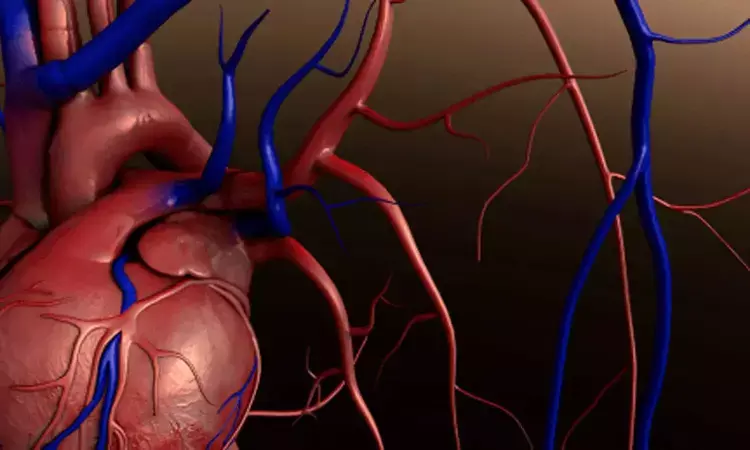- Home
- Medical news & Guidelines
- Anesthesiology
- Cardiology and CTVS
- Critical Care
- Dentistry
- Dermatology
- Diabetes and Endocrinology
- ENT
- Gastroenterology
- Medicine
- Nephrology
- Neurology
- Obstretics-Gynaecology
- Oncology
- Ophthalmology
- Orthopaedics
- Pediatrics-Neonatology
- Psychiatry
- Pulmonology
- Radiology
- Surgery
- Urology
- Laboratory Medicine
- Diet
- Nursing
- Paramedical
- Physiotherapy
- Health news
- Fact Check
- Bone Health Fact Check
- Brain Health Fact Check
- Cancer Related Fact Check
- Child Care Fact Check
- Dental and oral health fact check
- Diabetes and metabolic health fact check
- Diet and Nutrition Fact Check
- Eye and ENT Care Fact Check
- Fitness fact check
- Gut health fact check
- Heart health fact check
- Kidney health fact check
- Medical education fact check
- Men's health fact check
- Respiratory fact check
- Skin and hair care fact check
- Vaccine and Immunization fact check
- Women's health fact check
- AYUSH
- State News
- Andaman and Nicobar Islands
- Andhra Pradesh
- Arunachal Pradesh
- Assam
- Bihar
- Chandigarh
- Chattisgarh
- Dadra and Nagar Haveli
- Daman and Diu
- Delhi
- Goa
- Gujarat
- Haryana
- Himachal Pradesh
- Jammu & Kashmir
- Jharkhand
- Karnataka
- Kerala
- Ladakh
- Lakshadweep
- Madhya Pradesh
- Maharashtra
- Manipur
- Meghalaya
- Mizoram
- Nagaland
- Odisha
- Puducherry
- Punjab
- Rajasthan
- Sikkim
- Tamil Nadu
- Telangana
- Tripura
- Uttar Pradesh
- Uttrakhand
- West Bengal
- Medical Education
- Industry
Color Doppler Ultrasound beats Ankle-Brachial Pressure Index for diagnosing of PVD: Study

According to recent research published in the Indian Journal of Surgery, researchers having considered CT angiography as the gold standard investigation noted that Color Doppler ultrasound proved to be a better modality as compared to the ankle-brachial pressure index for diagnosis of peripheral vascular disease.
Peripheral vascular diseases (PVD) are a group of common degenerative (organic) and vasospastic (functional) disease processes that result in significant morbidity and are strong predictors of subsequent mortality. It is diagnosed by a definitive history of intermittent claudication or if one or more peripheral pulses are absent in one or both lower limbs. The debilitating nature of PVD calls for accurate diagnosis and treatment. The gold standard of diagnosis is angiography. However, the use of this technique is limited due to its invasive nature, the use of contrast agents, and its cost.
However, a variety of non-invasive techniques, viz., ankle-brachial pressure index (ABPI) test and color Doppler imaging, are available to diagnose the presence of PVD as well as to localize areas of stenosis, assess the severity of the disease, and follow patients for disease progression or response to therapy.
Therefore, Shradha Gupta and associates conducted the present study to compare color Doppler ultrasound and ABPI individually and in combination in diagnosing cases of peripheral vascular diseases, considering CT angiography the gold standard investigation.
The assessment of the sample was done based on previous history, clinical examination, and other relevant investigations which were noted in the datasheet according to the proforma including the Edinburgh Claudication Questionnaire. Relevant statistical tests were carried out for the comparison of color Doppler ultrasound and ankle-brachial pressure index measurement in peripheral vascular diseases.
The sensitivity, specificity, positive predictive value, and the negative predictive value was calculated for the comparison of ABPI and color Doppler imaging with CT angiography.
Based on the findings the authors concluded that "Color Doppler ultrasound proved to be a better modality as compared to the ankle-brachial pressure index for diagnosis of peripheral vascular disease, considering CT angiography the gold standard investigation."
Dr. Nandita Mohan is a practicing pediatric dentist with more than 5 years of clinical work experience. Along with this, she is equally interested in keeping herself up to date about the latest developments in the field of medicine and dentistry which is the driving force for her to be in association with Medical Dialogues. She also has her name attached with many publications; both national and international. She has pursued her BDS from Rajiv Gandhi University of Health Sciences, Bangalore and later went to enter her dream specialty (MDS) in the Department of Pedodontics and Preventive Dentistry from Pt. B.D. Sharma University of Health Sciences. Through all the years of experience, her core interest in learning something new has never stopped. She can be contacted at editorial@medicaldialogues.in. Contact no. 011-43720751
Dr Kamal Kant Kohli-MBBS, DTCD- a chest specialist with more than 30 years of practice and a flair for writing clinical articles, Dr Kamal Kant Kohli joined Medical Dialogues as a Chief Editor of Medical News. Besides writing articles, as an editor, he proofreads and verifies all the medical content published on Medical Dialogues including those coming from journals, studies,medical conferences,guidelines etc. Email: drkohli@medicaldialogues.in. Contact no. 011-43720751


